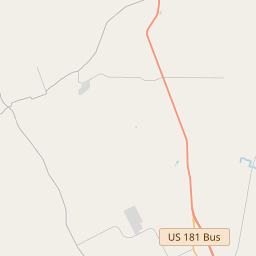Loma Sandia Prehistoric Cemetery
Historical marker location:






“Coahuiltecan” is a generic name for Native American tribes that inhabited the southern Texas and northern Mexican gulf coast before European colonization. These hunter-gatherer groups either died out or were renamed in the early historic era.
In this vicinity, archeologists excavated burial grounds of Coahuiltecan groups in two separate soil strata. The older graves date from the middle-archaic period (around 850 B.C.), while the upper level dates from the late-archaic (around 250 B.C.). Artifacts reveal that the hunting-gathering culture remained largely unchanged over the two periods, although bows and arrows used in the late-archaic period provided improved access to protein from large animals such as buffalo.
About 200 graves contained personal possessions such as tools for sewing and cooking, shells for jewelry and red ocher for cosmetics found with females’ remains. A few graves containing the ashes of adult males had white-tail deer antler racks affixed to them, indicating the individual had a high social status. Trade items such as arrowheads and beads indicate that the groups engaged in trade with coastal and interior tribes. The forensic evidence suggests that only thirteen males and four females may have lived past the age of forty.
Scientists and scholars from one foreign (Adam Mickiewicz University, Poland) and four Texas (Texas A&M, university of Texas-Austin and San Antonio, and Texas Tech) Universities and the Texas Department of Transportation cooperated in the Loma Sandia excavation project, the largest archeological-historical venture of its era.
(2012)
MARKER IS PROPERTY OF THE STATE OF TEXAS
As one of the most visible programs of the Texas Historical Commission (THC), historical markers commemorate diverse topics in Texas history, including: the history and architecture of houses, commercial and public buildings, religious congregations, and military sites; events that changed the course of local and state history; and individuals who have made lasting contributions to the state, community organizations, and businesses.
The discovery of oil in 1901 near Beaumont, Texas, sparked an oil boom that transformed the state's economy and led to the rise of the modern petroleum industry.
In the early 18th century, Spanish explorers began to venture into the area, searching for new territories to claim. It wasn't until the early 19th century when Anglo-American settlers arrived in the area. The Spanish government offered land grants to attract settlers, and many families moved to Live Oak County, establishing small ranches and farms. The region's fertile soil and mild climate made it ideal for agriculture, and cotton and cattle quickly became the mainstay of the local economy.
During the mid-19th century, Live Oak County witnessed significant growth and development. In 1856, the county was officially established, named after the live oak trees that were abundant in the area. By this time, more settlements had sprung up, and businesses flourished, including general stores, cotton gins, and blacksmith shops. The arrival of the railroad in the late 1800s further boosted the county's economy, allowing for easier transportation of goods and access to markets.
The early 20th century brought challenges to Live Oak County, as the agricultural sector faced disruptions due to drought, the Great Depression, and changes in farming practices. However, the discovery of oil in the early 1940s brought a significant economic boom, transforming the county once again. Oil companies flocked to Live Oak County, bringing jobs and prosperity to the area. The oil industry continues to be a vital part of the county's economy to this day, alongside agriculture and other industries.
Live Oak County Timeline
This timeline provides a concise overview of the key events in the history of Live Oak County, Texas.
- 1846 - Live Oak County is established as a separate county by the Texas legislature.
- 1848 - The county is officially organized.
- 1850s - The population begins to increase due to the establishment of ranching and farming operations.
- 1881 - The San Antonio and Aransas Pass Railway is completed, connecting the county to other parts of Texas.
- 1890s - An oil boom occurs in the county, leading to increased economic activity and population growth.
- 1920s - The oil industry experiences a decline, leading to a decrease in population and economic slowdown.
- 1930s - The county is heavily affected by the Great Depression, with many residents facing unemployment and poverty.
- 1940s - The end of World War II brings an economic boost to the county as industries begin to recover.
- 1970s - The county experiences another oil boom, leading to increased oil production and economic growth.
- Present - Live Oak County remains a primarily rural area, known for its agriculture, oil production, and outdoor recreational activities.